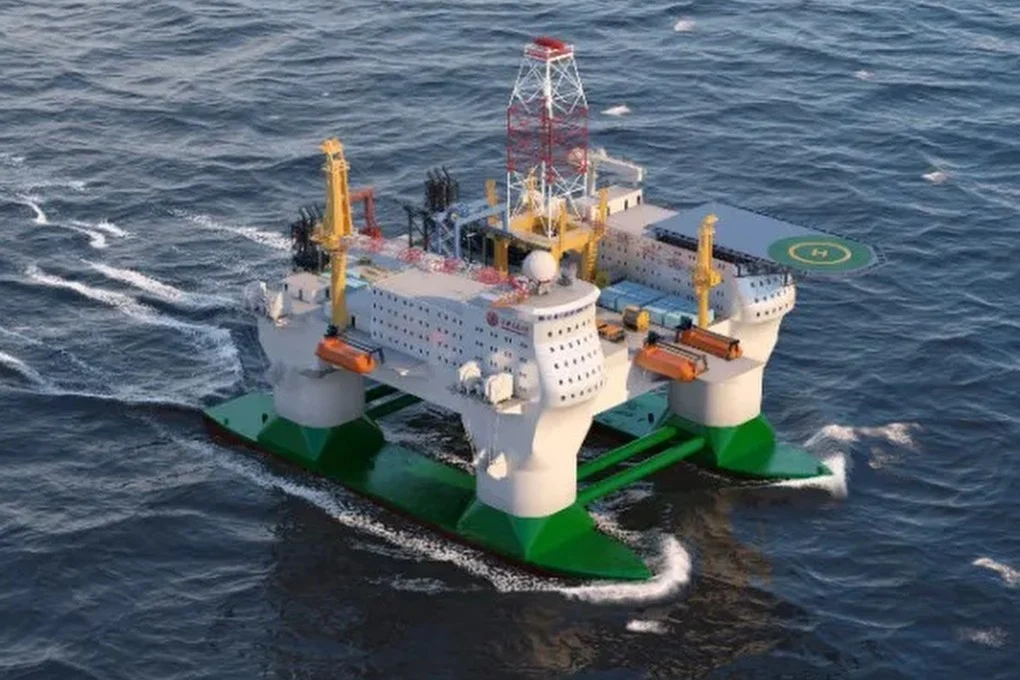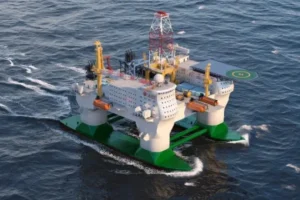1.Introduction
China has begun constructing a large mobile floating artificial island with long-term deep-sea operational capability.
Expected to become operational by 2028.
The project has attracted global attention due to its strategic location, cutting-edge engineering, and potential geopolitical impact, especially in the South China Sea.
2. Official Name & Purpose
Formal Name: Deep-Sea All-Weather Resident Floating Research Facility.
China claims the project is a scientific research platform, but many experts view it as a strategic dual-use asset (civilian + military).
3. Key Technical Specifications
3.1 Structural Design
Displacement/Weight: ~78,000 tonnes (similar to China’s Fujian aircraft carrier).
Design: Semi-submersible twin-hull platform – provides stability in rough seas.
Dimensions:
Length: 138 m
Width: 85 m
Deck height above sea level: 45 m
Endurance: Can support 238 personnel for 120 days (4 months) without resupply.
Speed: Capable of cruising at approximately 15 knots.
Designed to operate even in cyclone-prone deep-sea environments.
4. Advanced Materials & Nuclear Blast Resistance
4.1 Material Innovation
Built using a microscopic lattice of folded metal tubes arranged in geometric patterns.
This structure:
Compresses under extreme force
Increases density and strength
Absorbs shock efficiently
Functions like a high-performance, energy-dissipating shield.
4.2 Nuclear Protection
The platform is reportedly designed to withstand pressure waves from nuclear blasts.
Also includes:
Emergency power systems
Secure communication networks
Stabilised navigation systems
5. Strategic Significance in the South China Sea
5.1 Persistent Long-Term Presence
Its endurance far exceeds that of many conventional warships, even rivaling nuclear-powered carriers in operational duration.
Can maintain a continuous presence in remote maritime regions.
5.2 Dual-Use Potential
Although called a scientific platform, it could support:
Maritime surveillance
Logistics for naval operations
Forward deployment base
Observation and monitoring systems
Underwater resource exploration (energy, minerals)
5.3 Civilian Cover, Military Utility
Officially civilian → helps avoid international scrutiny.
Practically → can strengthen China’s control over contested waters.
6. Geopolitical Implications
6.1 Impact on South China Sea Tensions
The South China Sea is already highly contested with overlapping claims by China, Vietnam, Philippines, Brunei, Malaysia, and Taiwan.
A mobile artificial island increases China’s ability to:
Expand operational reach
Strengthen maritime claims
Monitor foreign naval movement
Influence shipping lanes and resource zones
6.2 Reaction of Other Countries
Vietnam has accelerated construction of its own artificial structures in the Spratly Islands through dredging and land reclamation.
The region may witness intensifying military and strategic competition.
7. Broader Context: China’s National Plans
The project aligns with China’s 14th Five-Year Plan for building advanced scientific and technological infrastructure.
Part of China’s push toward expanding its “blue economy”—which includes:
Offshore energy exploration
Deep-sea mineral extraction
Marine biotechnology
Maritime security operations
8. Exam-Oriented Quick Facts
Displacement: ~78,000 tonnes (similar to Fujian aircraft carrier).
Endurance: 120 days without resupply (longer than many nuclear carriers).
Personnel Capacity: 238 members.
Speed: ~15 knots.
Design Type: Semi-submersible twin-hull.
Role: Scientific + strategic (dual-use).
Region of Deployment: South China Sea.
Nuclear-resistant material: Microscopic folded metal lattice.
Part of: China’s 14th Five-Year Plan.
Global Concern: Geopolitical competition, surveillance potential, maritime dominance.
9. Why This Development Matters
Enhances China’s long-duration maritime reach.
Provides a mobile base for both scientific and quasi-military activities.
Could reshape power dynamics in the South China Sea.
Raises concerns about the militarisation of civilian infrastructure.
Signals China’s technological advancement in ocean engineering and strategic platforms.
If you want, I can also make:







